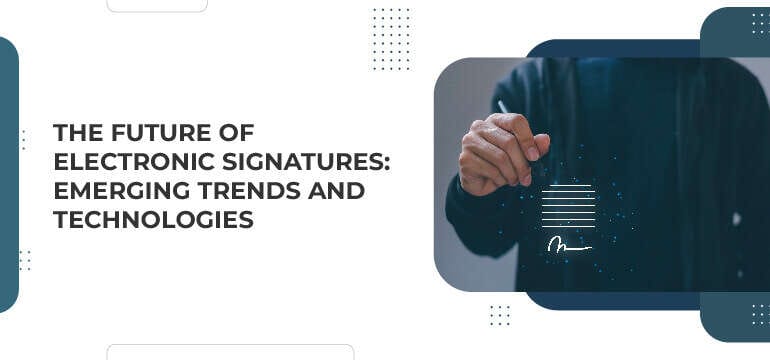

This article will explore the future of electronic signatures, including the emerging trends and technologies shaping this space. First, a brief overview of why E-Signatures have taken off in such a big way.
Understanding the Appeal of E-Signatures
A survey conducted by Adobe found that 75% of businesses believe that eliminating paper-based processes is the key to digital transformation. Additionally, 80% of enterprises report having increased their usage of electronic signatures since the COVID-19 pandemic began.
Electronic signatures can also significantly reduce the time and costs of document signing. According to a study by Forrester Research, businesses can save up to $20 per document by using electronic signatures instead of traditional paper-based processes.
Moreover, electronic signatures provide a high level of security and compliance. The Electronic Signatures in Global and National Commerce Act (ESIGN) and the Uniform Electronic Transactions Act (UETA) provide legal validity to electronic signatures in the United States. In addition, the General Data Protection Regulation (GDPR) in Europe and the Electronic Transactions Act (ETA) in Australia provide similar legal frameworks.
E-Signature Trends For 2023
As technology continues to evolve, the electronic signature landscape is also expected to change. Security & user experience are two key drivers for the E-Signature trends shaping the market today.
Users want a convenient & remote process in place to sign documents, and enterprises are prioritizing the security & authenticity of signatures. E-Signature providers are leveraging cutting-edge technology to meet these needs. Here’s how.
Blockchain-based Signatures
One of the emerging trends in the electronic signature space is the use of blockchain technology. Blockchain is a decentralized digital ledger that records transactions securely and transparently. Electronic signatures can be stored in a tamper-proof and immutable manner using blockchain technology, ensuring they cannot be altered or deleted. This makes blockchain-based e-signatures ideal for high-value transactions, such as real estate deals or financial transactions.
Smart Signature Verification
Another trend in the e-signature space is the extensive application of artificial intelligence (AI) and machine learning (ML) algorithms. AI and ML can be used to analyze signature patterns and detect any fraudulent activity. For example, if an e-signature is seen to be different from the usual signature pattern, the system can flag it as potentially fraudulent and ask for further authentication to be conducted.
Mobile & Biometric Authentication
The use of mobile devices for e-signatures is also on the rise. With the increasing use of smartphones and tablets, businesses are looking for ways to enable their customers to sign documents on the go. Mobile e-signatures help users to sign documents using their mobile devices, making it convenient and easy to complete transactions remotely.
Another emerging technology in the e-signature space is the use of biometric authentication. This form of authentication uses unique physical characteristics, such as fingerprints, facial recognition, or voice recognition, to verify the signer’s identity. Verifying signer identities in this way makes e-signatures more secure and reduces the risk of fraudulent activity.
New Industry Adoption
Real estate is among the segments most influenced by E-Signature trends and adoption rates.
Businesses in the sector are leveraging e-signatures to streamline the document signing process, reduce costs, and improve efficiency. With the use of digital document execution, real estate agents and brokers can sign contracts, agreements, and other documents remotely, making it easier to close deals and conduct transactions. This trend is expected to continue as more businesses in the real estate segment adopt e-signatures.
The adoption of e-signatures is also increasing in the healthcare industry. With the need for remote consultations and telemedicine, healthcare providers are looking for ways to enable patients to sign consent forms and other documents electronically. Electronic signatures in healthcare can improve patient experience, reduce paperwork, and increase efficiency.
Finally, the adoption of e-signatures is also on the rise in the government sector. Governments the world over are looking for ways to digitize their operations and reduce paperwork. Electronic signatures can help governments streamline processes, reduce costs, and improve efficiency.
Conclusion
Electronic signatures are here to stay, and their adoption is only going to increase in the future. The emerging trends and technologies in the e-signature space, such as blockchain, AI and ML, mobile devices, biometric authentication, healthcare, and government adoption, are shaping the future of online signatures.
As businesses and individuals continue to embrace digital transactions, e-signatures will become an essential tool for streamlining operations and enhancing the digital user experience.


